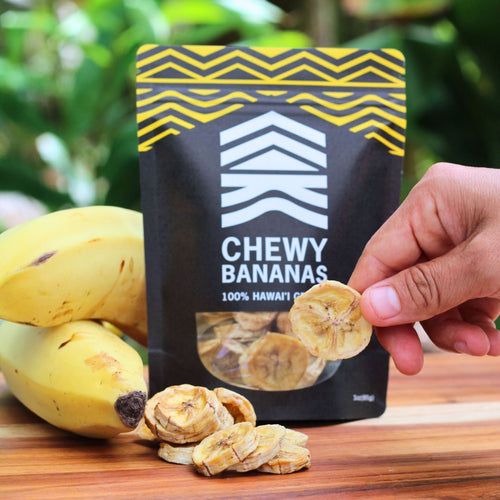In early December 2021, Hawaiʻi was hit by a storm so powerful that it made national news. The following morning, we assessed the damage. It wasn’t pretty. But, what happened next was truly beautiful.
To really tell the story, let’s start from the beginning.
1980s
As a young girl growing up on Maui, I was constantly searching for ways to be Hawaiian. My cultural resume was filled with things that might connect me to my ancestors: I studied the language, paddled outrigger canoes, joined a hālau hula.
I enjoyed those activities, but none of them gave me that deep connection I was searching for. I felt I was failing as a Hawaiian.
2017-current
In my 30s I found farming, and everything changed. Today, my husband Brad and I run Polipoli Farms in Waiehu, Maui. We are growing native and Polynesian plants in an agroforest. As I started to grow the foods of my culture, I found that missing link: ʻāina.

Through farming, I’m tapping into the wisdom of my ancestors. My search for ʻike kūpuna (ancestral knowledge) led me to follow moon cycles, study weather patterns, observe the animals and plants around me. Simply put, I’m starting to see with Hawaiian eyes.
I often think, “I wish I learned this stuff earlier!” I can’t go back in time, but I can help foster these opportunities for others. Enter travel2change.
October 2021
In late 2021, I joined 28 other participants in the Kaiaulu Hoʻokipa Impact Studio program. The new initiative, launched by the Native Hawaiian Hospitality Association (NaHHA) and travel2change, helps local organizations host authentic and regenerative experiences for visitors and residents.
Through this cohort, I realized that welcoming guests to the farm is a way to connect people and ʻāina, so that both may thrive. In addition to growing healthy and culturally significant crops, we’re also striving to cultivate community.
December 2021
On December 5, 2021 Hawaiʻi was hit by a storm so destructive that it made national news. The following morning, Brad and I awoke to a devastating scene: snapped trees, flattened māmaki, and an ʻauwai that had dried up.

As we walked the ʻāina, our hearts broke into a million pieces. I recall telling someone that it “felt like identifying bodies,” as these plants are truly part of our ʻohana.
Pretty soon, the calls and texts started coming in. Family members showed up at the farm, chainsaws in hand. Our fridge started to fill with meals for the week ahead. Friends created kōkua pages and asked their networks to support us.
Just days earlier, our desire to cultivate community was an abstract thought. But on December 6, as our friends and neighbors—and even strangers—embraced us, we realized that we are already part of a community.
January 2022
Just one month after the storm, we hosted a planting day with a small group of family, neighbors, and folks from travel2change. (It would’ve been bigger, if not for Covid!)
The day started with my Aunty Mikahala offering a heartfelt pule, and continued with folks grabbing shovels and setting delicate māmaki into the soil. A soothing soundtrack of stories and laughter filled the air. After the planting, Brad and I offered an ʻoli to honor the elements both around us and in the young plants.
We didn’t anticipate our first travel2change experience to include rebuilding our farm, but it was a fitting start to a new chapter for this ʻāina.
The storm taught us some amazing lessons, and reminded us about the importance of relationships. Biggest takeaway: Community = resilience. You truly can’t have the latter without the former.









0 comments